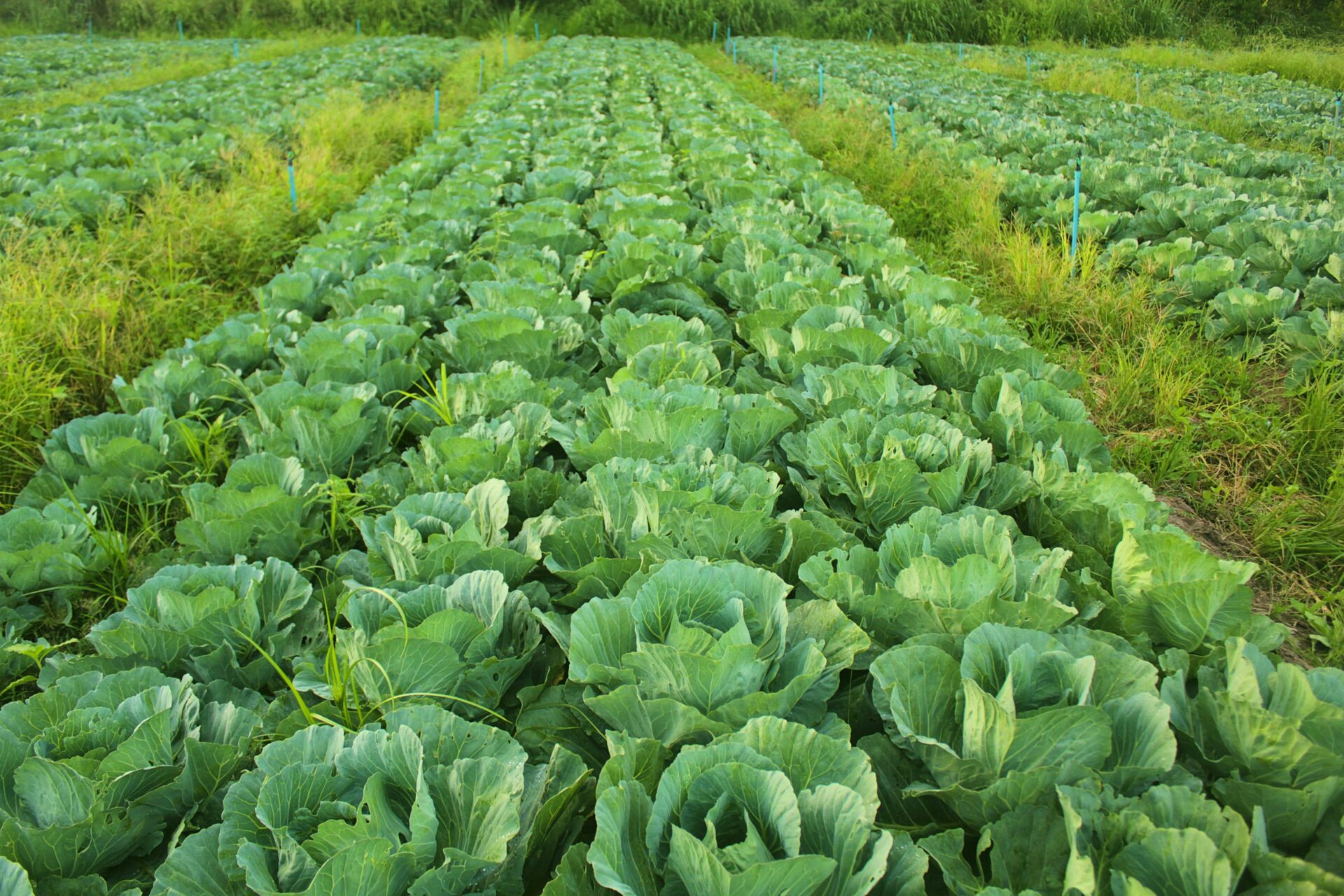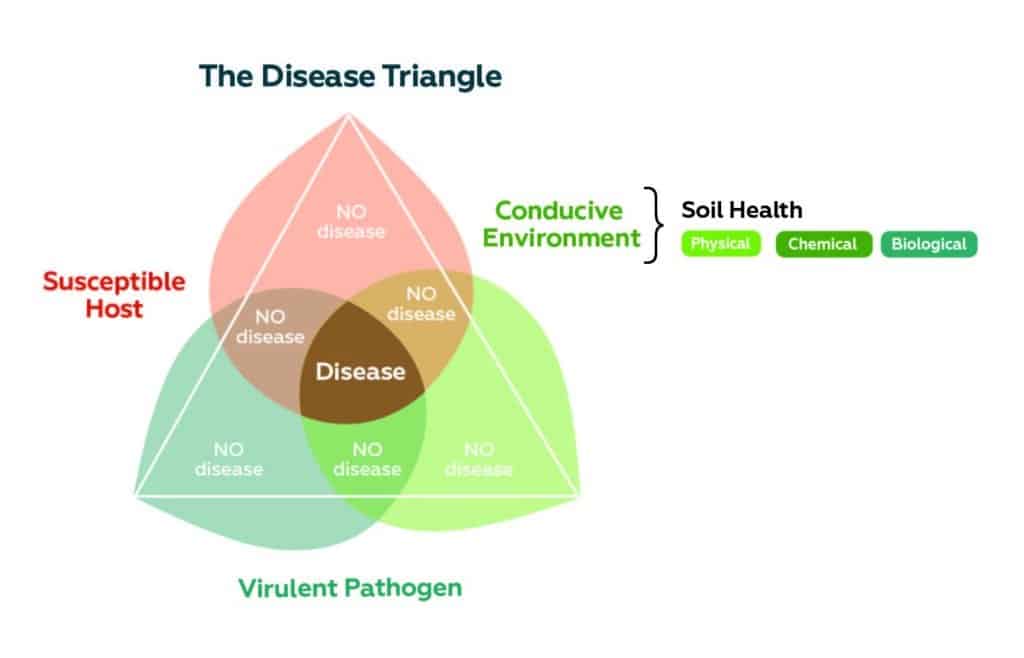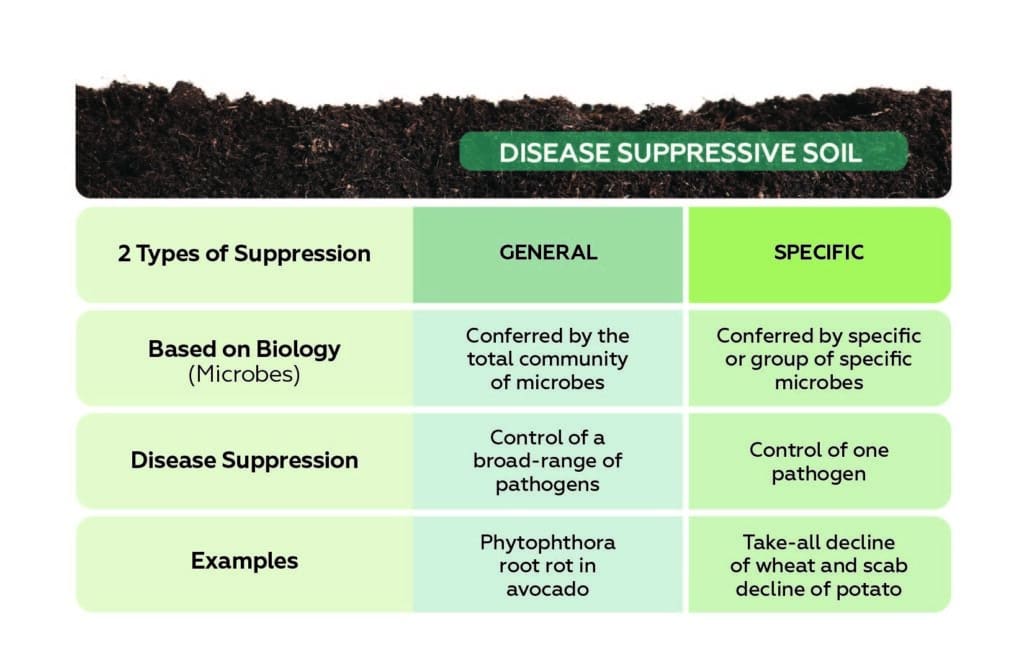Sep 11, 2025



Keeping the soil on your farm healthy may seem like it takes time and money, along with blood, sweat, and tears. Soil can create a lot of work if it’s unhealthy. Avoiding and mitigating soil compaction, tending to post-harvest residue, and fighting off soil-borne diseases is a short list of complications that could impact your soil health. Yet, the work you put into your soil doesn’t have to feel one-sided.
Science supports, with the right treatments, your soil can work for you. Plus, healthy soils can reduce the amount of work you need to put into it!
Healthy soil and healthy crops work together to improve disease resistance. If you support beneficial bacteria and fungi in your soil, they will go to work protecting your crops from soil-borne diseases.
For soil-borne disease to occur, three components must be present. This includes a susceptible host, a conducive environment, and a virulent pathogen.

Growers don’t have to protect against all three components. Protecting just one will make it impossible for soil-borne disease to strike.
Most growers focus on the host or selecting a resistant crop variety. However, we can unlock disease protection by influencing the environment. By environment, we mean the chemical, physical, and biological components of your soil and increasing soil health in a few areas listed below.
If properly cared for, your soil can create an environment that is non-conducive to pathogen growth. Without a conducive environment, plant disease is not possible. The trick to creating a non-conducive environment for pathogens is fostering disease-suppressive soils (DSS).
DSS naturally defend against pathogenic diseases before the disease attacks a crop. Or, if a pathogen attacks, DSS causes the disease to decline with successive cropping.
To understand DSS, you must first understand beneficial microbes.
There’s a lot of microbiology in your soil, including beneficial microbes, and pathogenic microbes. Beneficial microbes improve soil and crop health; whereas, pathogenic microbes can be devastating for your crops.
The good news is you don’t have to get rid of pathogens to mitigate soil-borne diseases. Even with the presence of disease-causing pathogens, healthy soils can keep their attacks on your crop to a minimum.
This is because the beneficial soil microbes have a symbiotic relationship with your crops. These microbes use the exudates and nutrients created and released by your crops. This enables their survival and blocks pathogenic microbes from accessing and utilizing the resources needed to survive.
When beneficial microbes outnumber pathogenic microbes, there’s an increase in microbial competition. Additional crop-supporting microbes reduce the establishment and growth of pathogenic fungi and bacteria in your microbiome.
Occasionally, beneficial microbes display hyperparasitism, secreting antibiotic-like enzymes, and release exudates.
It’s in the beneficial microbes’ best interest to keep your crops alive, so they have multiple ways of fighting off dangerous pathogens.
Soil microbes play a key role in soil health and soil quality. They directly affect the disease suppression abilities of your soil.
Healthy soil microbes improve soil structure, water infiltration, and water retention, and reduce. They’re able to improve nutrient access for your crop through increased soil aggregation, and release minerals through nutrient mineralization. Plus, they help your fertilizer investment go further.
From soil structure to nutrient mineralization, soil microbes play a key role in achieving healthy soil and a healthy potential yield for growers.
Healthy, active, beneficial microbes are key to creating DSS. There are two kinds of DSS worth noting, including general and specific suppressive soil.

General suppressive soil provides protection against multiple pathogenic microbes. To do this, beneficial microbes must out-compete pathogenic microbes to create general suppression. Thus, to achieve general suppressive soil, your soil microbiome needs to have an abundance (total number) and diversity (different types) of beneficial microbes.
General suppressive soil doesn’t necessarily protect against every pathogen in all conditions, but it does protect against many pathogens in many conditions. Think of general suppression as a way to have extra players on the field during a football game – it’s a great advantage for your crops.
You can support your soil’s general suppression with regenerative farming practices (listed below).
Specific suppressive soil is associated with a specific species of beneficial microbes or group of microbes. These beneficial microbes provide complete suppression of one pathogen. Think of specific suppression as creating a twenty-foot wall around your team’s end zone. While pathogens are still present in your soil, it’s almost impossible for pathogens to strike your crops. Even when they do strike, you will see a major reduction in incidents of crops affected by pathogens.
Specific suppressive soil can occur naturally or through induction. When it occurs naturally, the suppressive soil is long-standing and is often found even without the presence of plants.
Induced specific suppression can be produced by implementing monoculture of a crop (or monocropping) and the use of green manure.
Due to the disadvantages of monocropping, it may be in a grower’s best interest to take steps towards creating general suppressive soil over specific suppressive soil.

There are many ways to help cultivate general DSS. By rotating crops, non-hosts can reduce soil-borne diseases and improve microbial diversity. Intercropping also has a similar effect.
Studies show a low or no-till practice supports a healthy microbiome. When tills turn a field, it disrupts the microbiome. It can also lead to increased soil compaction and, hence, a reduction in aggregates. When possible, consider alternative tilling practices.
To maximize your efforts, feed your beneficial microbial community. 75% of the microbes in your soil are dormant or inactive. This is often due to starvation. Adding carbon sources can increase the abundance and diversity of beneficial microbes. A carbon-rich microbial food, like PhycoTerra, can wake up sleeping soil microbes and get them in the game, protecting your crops.
Applying organic inputs, like manure, mulch, and compost throughout the year can also help feed hungry beneficial microbes.
The future of fighting soil-borne diseases is in our soil. As our society continues to restrict fumigants and pesticides, it’s up to growers to adapt their productions. The solution to soil-borne diseases needs to be cost-effective and help control difficult, productivity-limiting diseases.
The health of our future crops depends on it. Even new TV series, like Discovery Channel’s Live to Farm, document these new opportunities for growers to work with their soil.
Supporting beneficial microbes with regenerative farming practices helps growers create disease-suppressive soils. A great place to start is feeding soil microbes to wake them up. Tap in your underutilized secret weapon today, and start cultivating disease-suppressive soils.